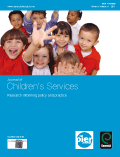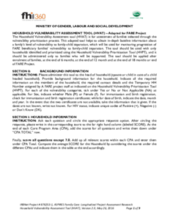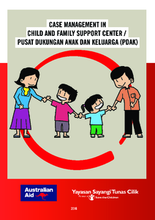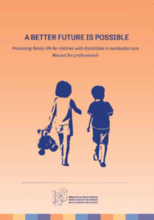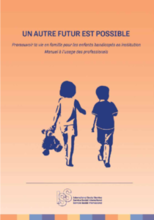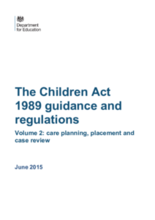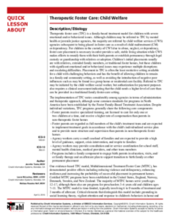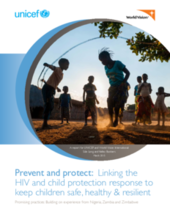Displaying 121 - 130 of 276
This article presents a systematic review of the existing knowledge of the situation of recently arrived refugee children in the host country.
The purpose of this paper is to map the current organisation and implementation of children’s services in three regions of Spain, to identify strengths and gaps and to suggest proposals for improvement in line with European recommendations.
The Household Vulnerability Assessment tool (HVAT) is for assessment of families selected through the vulnerability prioritization process. This adapted tool helps to obtain in-depth baseline information about a family’s level of vulnerability to family-child separation, which will be used for monitoring progression of FARE beneficiary families’ vulnerability to family-child separation.
This book introduces the PDAK – Pusat Dukungan Anak dan Keluarga (Child and Family Support Centre) in Indonesia and the case management system utilized within the centre.
This manual provides guidance to professionals who work with children with disabilities in residential care.
Ce manuel fournit des conseils aux professionnels qui travaillent avec les enfants handicapés dans les soins en établissement.
Volume 2 of the Children Act 1989 Guidance and Regulations provides guidance, primarily addressed to local authorities and their staff in England, about their functions under Part 3 of the Children Act 1989 which concerns the provision of local authority support for children and families. In particular it describes how local authorities should carry out their responsibilities in relation to care planning, placement and case review for looked after children.
In this “Quick Lesson About Therapeutic Foster Care,” the author provides a description of, and background information on, therapeutic foster care in the United States, an overview of national statistics regarding therapeutic foster care, and an overview of the risk factors and symptoms associated with children in need of therapeutic foster care.
This study carried out in the United States used a lens of family stress theory to explore adoptive parents’ responses to unexpected characteristics of their children.
This report from UNICEF and World Vision International documents country level approaches that respond to HIV and child protection challenges facing children and adolescents by linking both those responses.

